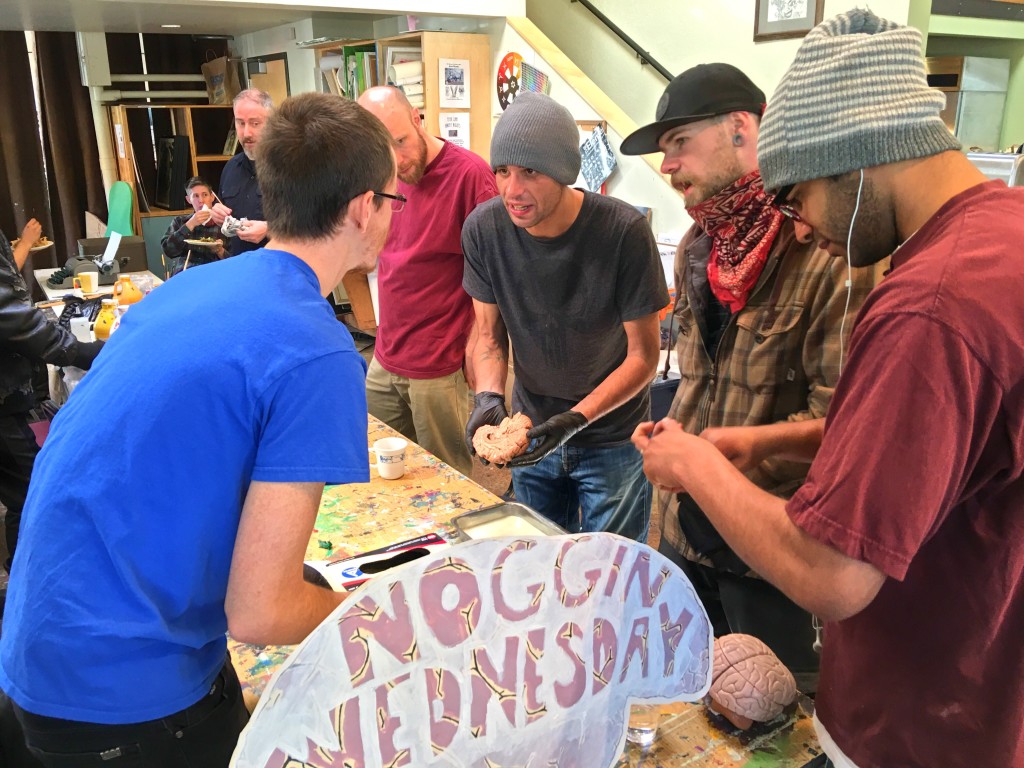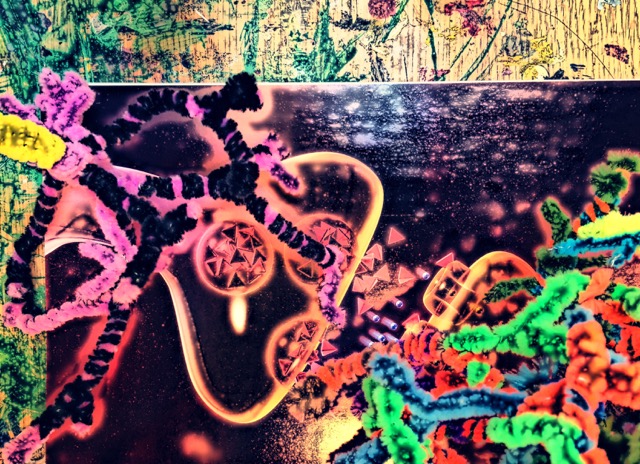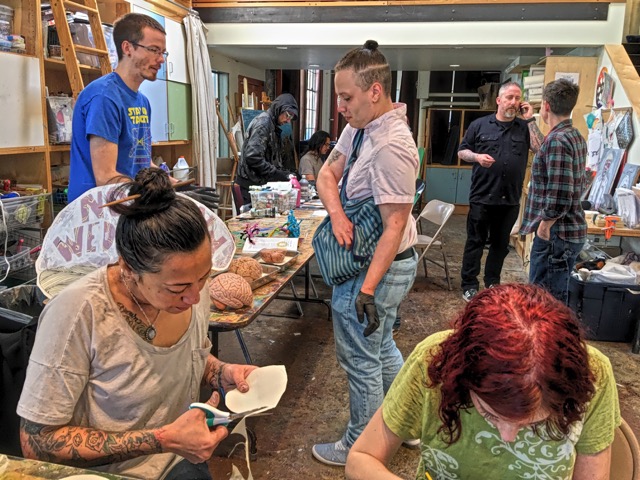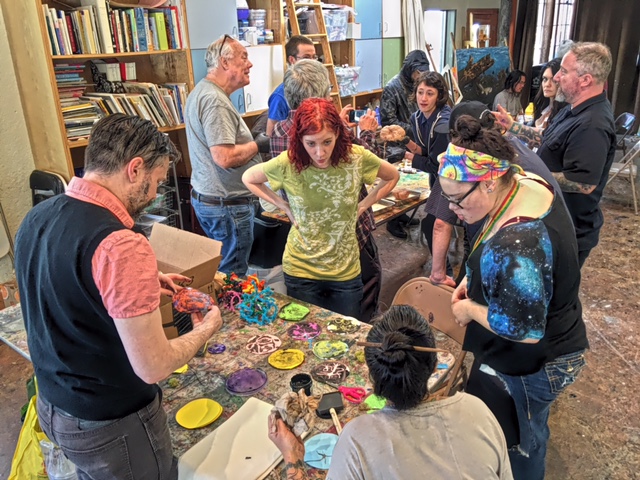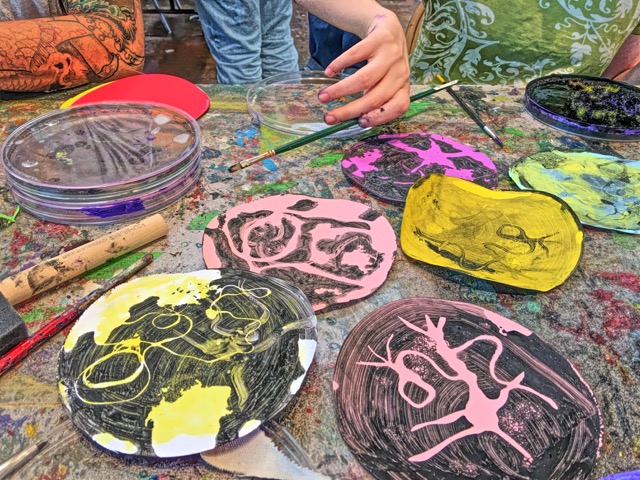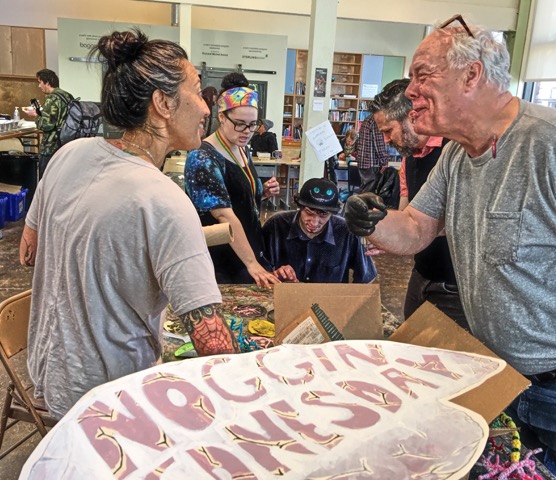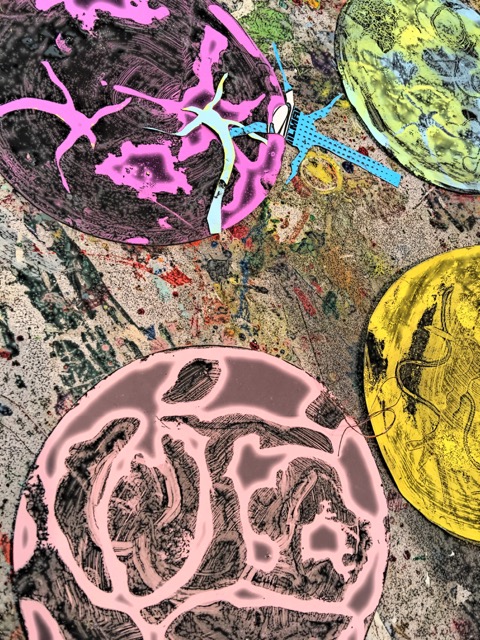Piriform cortex is a pear-shaped brain region in the ventral anterior temporal lobes, critical for olfaction (smell) – and the smells at P:ear in downtown Portland were extraordinary and welcoming on our first Noggin Wednesday this year…
Lunch was donated by Por Que No? Taqueria and Cupcake Jones, so we kept our formalin fixed brains some distance away!
Noggin volunteers included Kirk Wydner and Allie Clark from PSU, Carrie Miyamoto from PNCA, and Michael White from WSU Vancouver. Folks at P:ear had excellent questions about the brain, and drugs, and offered powerful stories of their own struggles with dependence on alcohol, and methamphetamine…
We discussed our dopamine networks, and how neural pathways essential for motivated behavior can be hijacked by chronic exposure to certain drugs, and down-regulate, or respond less effectively to both the drug, and to other stimuli associated with expectations of reward…
LEARN MORE: From earlier posts on nwnoggin.org…
LEARN MORE: Drugs, Brains, and Behavior: The Science of Addiction
We listened to some heartbreaking stories of tough efforts to quit, often involving dull, listless days with little drive for engagement with friends or activities that had previously generated enthusiasm and excitement…
But there was also clear engagement and interest in understanding how drugs impact brains, exactly where and why, and what steps might help to address this noticeable drop in motivation, restore enjoyment of life experiences, and prevent relapse. Involvement in rewarding activities, exercise and exploration can all be beneficial. Good food at P:ear, and care and social support from others, can also assist in recovery…
Viewing brains, and learning what you’re made of by asking direct, honest questions, and exploring critical structure-function relationships through art, is also highly social, motivating and rewarding…
We also discussed exciting work in Barb Sorg’s lab at WSU Vancouver, aimed at restoring plasticity to drug-related response networks in the frontal lobe, where connections get more fixed in place by extracellular chemical scaffolding.
Dissolving these “perineuronal nets” (indicated with synapse spanning pipe cleaners, above) might one day help new learning during rehabilitation produce real and persistent changes in behavioral responses to drugs, and drug-related environments…
Carrie Miyamoto also tested out her new Petri dish neuron print making project, something she plans to introduce to students in DC public schools later this month, when Noggin Takes DC!
Many thanks to the young people we spoke with, and to Program Director Joy Cartier, Art Program Director Will Kendall, and Education Programs Coordinator Sarah Louise Allen, for welcoming us back to P:ear…



